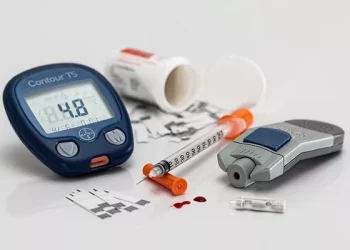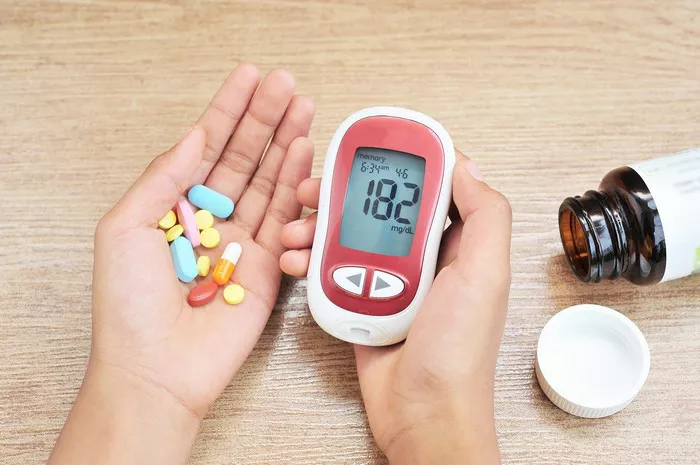Diabetes is a chronic condition affecting millions worldwide. According to the International Diabetes Federation, approximately 463 million adults aged 20-79 were living with diabetes in 2019, and this number is projected to rise to 700 million by 2045. While diabetes is prevalent, it’s not a one-size-fits-all condition. There are different types of diabetes, each with its own causes, symptoms, and management strategies. Understanding which type of diabetes you have is crucial for effectively managing your health. In this comprehensive guide, we’ll delve into the various types of diabetes and provide insights into how you can determine which type you may have.
Understanding Diabetes: A Brief Overview
Before delving into the specifics of different diabetes types, it’s essential to understand the basics of diabetes itself. Diabetes mellitus, commonly referred to as diabetes, is a metabolic disorder characterized by elevated blood sugar levels (hyperglycemia) resulting from either insufficient insulin production, ineffective insulin utilization, or both.
Insulin, a hormone produced by the pancreas, plays a central role in regulating blood sugar levels. It enables glucose from food to enter cells, where it’s used as energy or stored for future use. In individuals with diabetes, this process is disrupted, leading to elevated blood sugar levels, which, if left uncontrolled, can cause serious complications such as heart disease, stroke, kidney failure, and nerve damage.
Types of Diabetes
Diabetes is classified into several types, with the most common being Type 1, Type 2, gestational diabetes, and less common types such as monogenic diabetes and secondary diabetes.
Type 1 Diabetes: Formerly known as insulin-dependent or juvenile-onset diabetes, Type 1 diabetes is an autoimmune condition where the body’s immune system mistakenly attacks and destroys insulin-producing beta cells in the pancreas. As a result, the pancreas produces little to no insulin. Type 1 diabetes typically develops in children or young adults, although it can occur at any age. People with Type 1 diabetes require lifelong insulin therapy for survival.
Type 2 Diabetes: Type 2 diabetes is the most prevalent form of diabetes, accounting for around 90-95% of all diabetes cases. It usually develops in adults, although increasingly, it’s being diagnosed in children and adolescents due to rising obesity rates. In Type 2 diabetes, the body becomes resistant to insulin, and eventually, the pancreas may not produce enough insulin to maintain normal blood sugar levels. While genetics plays a role in Type 2 diabetes, lifestyle factors such as poor diet, sedentary lifestyle, and obesity are significant contributors.
Gestational Diabetes: Gestational diabetes occurs during pregnancy when the body cannot produce enough insulin to meet the increased demands of pregnancy. While gestational diabetes usually resolves after childbirth, it increases the risk of both the mother and child developing Type 2 diabetes later in life.
Other Types of Diabetes: Monogenic diabetes, also known as maturity-onset diabetes of the young (MODY), is a rare form of diabetes caused by mutations in a single gene. Secondary diabetes occurs as a result of another medical condition or as a side effect of certain medications.
Recognizing Symptoms
Symptoms of diabetes can vary depending on the type and individual factors. However, common symptoms include:
Frequent urination
Increased thirst
Extreme hunger
Unexplained weight loss
Fatigue
Blurred vision
Slow-healing sores
Tingling or numbness in the hands or feet
It’s important to note that some individuals, particularly those with Type 2 diabetes, may experience few or no symptoms, especially in the early stages of the disease. This is why regular health check-ups and screenings are crucial for early detection and intervention.
Diagnostic Tests
If you experience symptoms of diabetes or have risk factors such as family history, obesity, or gestational diabetes during pregnancy, your healthcare provider may recommend diagnostic tests to determine the type of diabetes you have. These tests may include:
Fasting Plasma Glucose (FPG) Test: This test measures your blood sugar levels after an overnight fast. A fasting blood sugar level of 126 milligrams per deciliter (mg/dL) or higher on two separate occasions indicates diabetes.
Oral Glucose Tolerance Test (OGTT): After fasting overnight, you’ll drink a sugary solution, and your blood sugar levels will be tested periodically over the next two hours. A blood sugar level of 200 mg/dL or higher two hours after drinking the solution suggests diabetes.
Hemoglobin A1c Test: Also known as glycated hemoglobin, this test measures your average blood sugar levels over the past two to three months. An A1c level of 6.5% or higher indicates diabetes.
Random Plasma Glucose Test: This test measures your blood sugar levels at any given time, regardless of when you last ate. A blood suga
r level of 200 mg/dL or higher, along with symptoms of diabetes, suggests diabetes.
Additionally, your healthcare provider may conduct further tests, such as checking for antibodies associated with Type 1 diabetes or performing genetic testing for monogenic diabetes if deemed necessary.
Treatment and Management
Once you’ve been diagnosed with diabetes and have determined the type, your healthcare provider will work with you to develop a personalized treatment plan tailored to your needs. Treatment and management strategies for diabetes may include:
Medication: Depending on the type of diabetes, you may need to take oral medications, injectable insulin, or other injectable medications to help manage your blood sugar levels.
Lifestyle Modifications: Adopting healthy lifestyle habits such as following a balanced diet, engaging in regular physical activity, maintaining a healthy weight, monitoring blood sugar levels regularly, and avoiding tobacco use are essential for managing diabetes effectively.
Continuous Monitoring: Regular monitoring of blood sugar levels, blood pressure, cholesterol levels, and other relevant parameters is crucial for assessing your diabetes management and adjusting your treatment plan as needed.
Education and Support: Diabetes self-management education programs can empower you with the knowledge and skills necessary to take control of your diabetes and prevent complications. Additionally, seeking support from healthcare professionals, support groups, and loved ones can provide valuable encouragement and guidance on your diabetes journey.
Regular Follow-Up: Keeping regular appointments with your healthcare provider for check-ups and evaluations is essential for monitoring your diabetes control, addressing any concerns or complications promptly, and making necessary adjustments to your treatment plan.
Conclusion
In conclusion, determining the type of diabetes you have is a crucial first step in effectively managing your health and preventing complications. Whether you have Type 1, Type 2, gestational diabetes, or another form of diabetes, early diagnosis, proper treatment, and proactive management are essential for optimizing your health and quality of life. By understanding the different types of diabetes, recognizing symptoms, undergoing diagnostic tests, and adhering to personalized treatment plans, you can take control of your diabetes and thrive despite the challenges it may present.
Remember, you’re not alone in your diabetes journey. Seek support from healthcare professionals, join support groups, and engage with loved ones to navigate the complexities of diabetes and live your best life possible. With knowledge, determination, and support, managing diabetes is entirely achievable, allowing you to lead a fulfilling and healthy life.


























